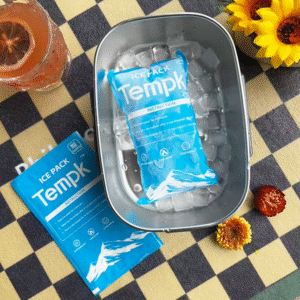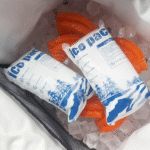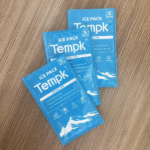Shipping seafood, particularly frozen varieties, requires careful attention to temperature control to preserve freshness and prevent spoilage. Dry ice pack sheets are a highly effective solution for maintaining the required low temperatures throughout transit. These sheets not only keep seafood frozen but also offer a number of benefits over traditional cooling methods, ensuring that your products arrive in optimal condition. Dans cet article, we will explore the advantages of using dry ice pack sheets for seafood shipping, provide guidelines on how to use them, and discuss best practices and compliance considerations for 2025.
-
Why are dry ice pack sheets essential for seafood shipping?
-
How do dry ice pack sheets help maintain seafood freshness?
-
What are the best practices for using dry ice in seafood shipments?
-
How to stay compliant with shipping regulations when using dry ice?
Why Are Dry Ice Pack Sheets Essential for Seafood Shipping?
Dry ice pack sheets are indispensable for shipping seafood because they maintain ultra-low temperatures, which are crucial for preserving the quality and safety of seafood products during transit. Seafood is extremely perishable and requires continuous temperature control to prevent spoilage, especially during long shipping times.
Key Benefits of Dry Ice Pack Sheets for Seafood Shipping:
-
Maintains Freezing Temperatures: Dry ice keeps seafood frozen at -78.5°C (-109.3°F), which is essential for products like fish, crevette, and shellfish that must remain frozen during transport.
-
Compact and Effective: These sheets are thin, flexible, and can be wrapped around seafood products, providing targeted cooling without the bulkiness of traditional ice packs.
-
Pas de résidu d'eau: Contrairement à la glace ordinaire, which melts and leaves behind water that could damage seafood packaging, La glace sèche sublime directement dans le gaz, ne laissant aucun liquide derrière.
| Avantage | Description | Application pratique |
|---|---|---|
| Effective Cooling | Keeps seafood frozen at ultra-low temperatures | Ensures freshness and prevents spoilage |
| Space-efficient | Mince, flexible sheets fit well around products | Reduces packaging space, Amélioration de l'efficacité |
| No Melting Residue | Sublimates into gas without leaving moisture | Prevents damage to seafood packaging |
User Practical Tips for Seafood Shipping:
-
Long-Distance Shipments: Dry ice sheets are ideal for international seafood shipments, as they can maintain the necessary low temperatures over extended durations.
-
Temperature-Sensitive Products: For high-end seafood or specialty items, dry ice ensures the perfect temperature from packaging to delivery.
-
Real-life Example: A seafood distributor using dry ice sheets for international shipments saw a 20% reduction in spoilage due to better temperature control, leading to higher customer satisfaction and reduced waste.
How Do Dry Ice Pack Sheets Help Maintain Seafood Freshness?
La glace sèche fonctionne en sublimant, which means it turns directly from solid to gas, creating a cooling effect without producing water that could damage the seafood. This property makes dry ice particularly useful in maintaining seafood freshness during shipment.
How Dry Ice Works for Seafood Shipping:
-
Conditionnement: Dry ice pack sheets are placed around seafood products in insulated containers. The sheets act as a cooling source, keeping the temperature stable during transport.
-
Processus de sublimation: Comme la glace sèche sublime, it releases CO2 gas, which creates a cooling environment without any moisture that could damage seafood packaging.
-
Surveillance: Using IoT-enabled temperature monitoring devices ensures that the seafood stays at the required temperature throughout transit. These devices provide real-time temperature changes and alerts for any potential issues.
Factors to Consider When Using Dry Ice for Seafood Shipping
-
Quantité de glace sèche: The quantity of dry ice needed depends on several factors, including shipping duration, température ambiante, and the type of seafood being shipped. For longer shipments or warmer climates, more dry ice may be required.
-
Emballage isolé: Well-insulated packaging helps to slow the sublimation process of the dry ice, ensuring that the seafood stays frozen for the full duration of the trip.
-
Safety Protocols: Since dry ice can displace oxygen in confined spaces, it is essential to follow safety guidelines during handling and transport.
| Consideration | Description | Recommandation |
|---|---|---|
| Quantité de glace sèche | More dry ice is required for longer shipments | Plan for the trip duration and temperature conditions |
| Isolation | Insulated packaging slows sublimation | Use high-quality insulated containers |
| Sécurité | Dry ice can displace oxygen | Ensure proper ventilation and handling |
Best Practices for Using Dry Ice in Seafood Shipments
To maximize the effectiveness of dry ice and minimize risks, it’s crucial to follow best practices. These practices will ensure your seafood arrives in top condition and within the required temperature range.
Key Best Practices:
-
Proper Sizing of Dry Ice Pack Sheets: Ensure that dry ice sheets are the right size for the seafood products. Too little dry ice can lead to early sublimation, while too much can create excessive pressure in the container.
-
Use of Insulated Shipping Containers: Choose containers specifically designed for temperature-sensitive shipments. These containers should allow for the safe placement of dry ice without causing risks such as CO2 buildup.
-
Temperature Monitoring Devices: Integrating temperature loggers or IoT-enabled sensors helps monitor the shipment’s temperature in real-time, ensuring that the seafood remains within the required freezing range.
Key Considerations for Compliance:
-
Regulatory Guidelines: Shipping dry ice internationally requires compliance with IATA (Association internationale des transports aériens) et point (Ministère des Transports) règlements. Ensure that all labeling and safety protocols are followed.
-
Documentation: Proper documentation, including the Material Safety Data Sheet (MSDS) pour la glace sèche, is required to provide details on handling, hazards, and emergency procedures.
-
Exigences du transporteur: Different carriers have specific rules for shipping with dry ice. Always check with your carrier to ensure compliance.
Latest Trends in Dry Ice Seafood Shipping
The dry ice shipping industry continues to evolve with new technologies and an increasing demand for fresh seafood. Below are some of the key trends to watch for in 2025:
1. Growing Demand for Sustainable Shipping Solutions
As consumers demand more sustainable products, the dry ice industry is adapting by offering eco-friendly options such as carbon-neutral dry ice and recyclable packaging materials.
2. Technological Advancements in Cold Chain Logistics
With the rise of IoT and smart sensors, more seafood distributors are using real-time monitoring devices to track the conditions of shipments. These innovations improve operational efficiency and reduce waste.
3. Faster Delivery Times
Consumers expect fresh, high-quality seafood delivered quickly, which is driving the demand for faster delivery options like same-day and next-day shipping. This has made efficient dry ice shipping solutions more important than ever.
FAQ: Dry Ice Shipping for Seafood
Q1: How long can dry ice keep seafood frozen during shipping?
Dry ice can keep seafood frozen for up to 48 heures, depending on the quantity used and shipping conditions. Pour les expéditions plus longues, more dry ice is required to maintain optimal temperatures.
Q2: Can I use dry ice sheets for other perishable items?
Oui, dry ice sheets are versatile and can be used for other perishable items like meats, fruits, et produits pharmaceutiques, providing consistent cooling over long durations.
Conclusion
En conclusion, dry ice pack sheets are an effective and reliable solution for shipping seafood. They maintain ultra-low temperatures, réduire la détérioration, and ensure that products arrive in optimal condition. By following the best practices, considering key factors like quantity and insulation, and staying compliant with regulations, seafood distributors can improve their logistics and provide customers with the highest-quality products.
Étapes suivantes: If you are looking to improve your seafood shipping processes, consider using dry ice pack sheets as part of your cold chain logistics. Reach out to experts for customized solutions that meet your specific needs.
À propos du tempk
Et tempk, we specialize in providing advanced cold chain solutions for industries such as seafood shipping. Our dry ice pack sheets and shipping containers are designed to ensure your products arrive at the perfect temperature, à chaque fois. Contact us today to learn more about our shipping solutions.
























